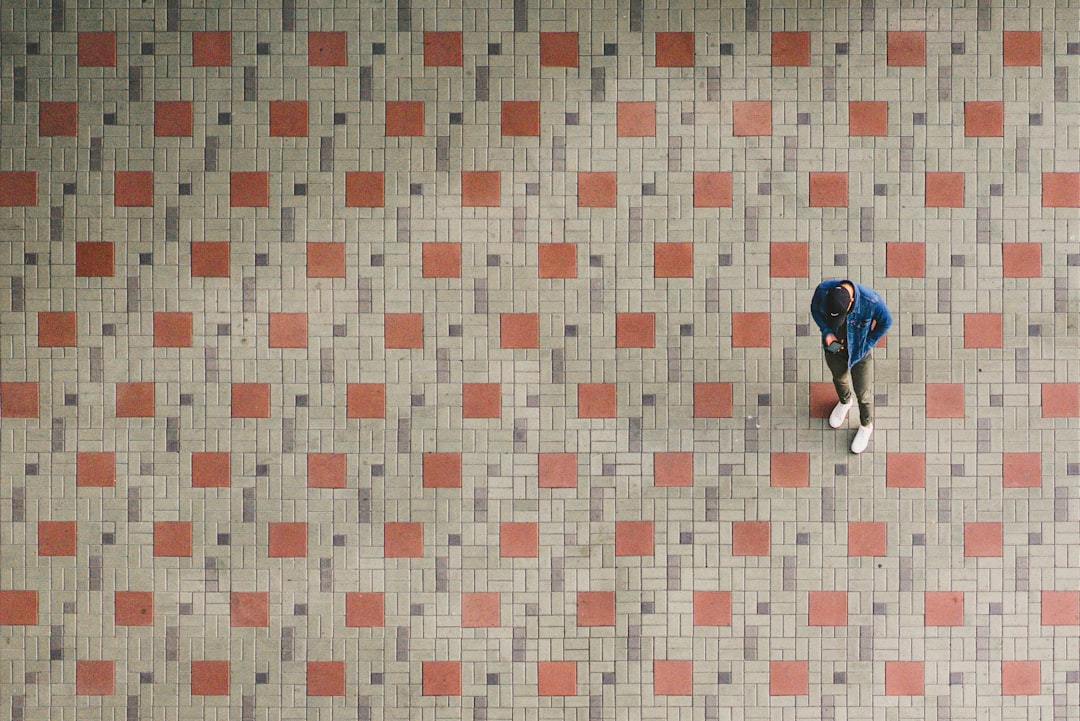Over the years, robotic floor cleaners have become more advanced and affordable, making them accessible to a wider range of industries. These machines are equipped with advanced sensors and navigation systems that allow them to navigate through complex factory layouts and clean various types of surfaces effectively.
There are several popular robotic floor cleaners in the market today. One example is the Roomba by iRobot, which was initially designed for home use but has gained popularity in commercial settings as well. Another popular brand is the Tennant T7AMR, which is specifically designed for industrial environments and can handle heavy-duty cleaning tasks.
How robotic floor cleaners are revolutionizing the cleaning industry
Robotic floor cleaners are changing the way factories are cleaned by offering a more efficient and consistent cleaning process. Unlike traditional cleaning methods that rely on human labor, robotic floor cleaners can work autonomously, allowing employees to focus on more important tasks.
Compared to manual sweeping and mopping, robotic floor cleaners can cover larger areas in a shorter amount of time. They are equipped with advanced mapping technology that allows them to navigate through complex factory layouts without getting stuck or causing damage to equipment or obstacles. This not only saves time but also ensures a more thorough and consistent cleaning result.
Benefits of using robotic floor cleaners in factories
There are several benefits to using robotic floor cleaners in factories. Firstly, they offer improved cleaning quality and consistency. These machines are programmed to follow a specific cleaning pattern, ensuring that every inch of the factory floor is thoroughly cleaned. They can also detect and remove dirt and debris that may be missed by manual cleaning methods.
Secondly, robotic floor cleaners can help reduce labor costs and increase productivity. By automating the cleaning process, factories can allocate their human resources to more important tasks, such as production or maintenance. This not only saves money but also improves overall productivity.
Lastly, robotic floor cleaners contribute to improved safety for workers. Manual cleaning methods can be physically demanding and may put employees at risk of injuries or accidents. By using robotic floor cleaners, factories can reduce the physical strain on their employees and create a safer working environment.
Increased efficiency and productivity with robotic floor cleaners
| Benefits of using robotic floor cleaners in factories |
|---|
| Increased efficiency and productivity |
| Improved cleaning quality and consistency |
| Reduced labor costs and injuries |
| Enhanced safety and hygiene standards |
| Lowered maintenance and repair expenses |
| Minimized environmental impact |
Robotic floor cleaners are designed to clean faster and more efficiently than humans. They are equipped with powerful suction capabilities and advanced cleaning algorithms that allow them to remove dirt and debris effectively. Additionally, these machines can work continuously without getting tired or needing breaks, ensuring a consistent cleaning process.
Factories that have implemented robotic floor cleaners have reported increased productivity as a result. With the cleaning process automated, employees can focus on more important tasks, such as production or maintenance. This leads to improved overall efficiency and productivity in the factory.
The impact of robotic floor cleaners on factory safety
One of the significant impacts of robotic floor cleaners in factories is the improvement in safety. Manual cleaning methods can put employees at risk of injuries or accidents, especially when working with heavy machinery or in hazardous environments.
Robotic floor cleaners can reduce these risks by taking over the cleaning process. Employees no longer need to manually sweep or mop the floors, reducing the physical strain on their bodies. This, in turn, reduces the risk of injuries and accidents in the workplace.
Factories that have implemented robotic floor cleaners have seen a significant decrease in accidents and injuries related to cleaning tasks. This not only improves the safety of employees but also reduces the costs associated with workplace accidents.
Cost savings with robotic floor cleaners in factory cleaning

While the initial investment in robotic floor cleaners may be higher than traditional cleaning methods, they can save money in the long run. Robotic floor cleaners offer several cost-saving benefits that make them a worthwhile investment for factories.
Firstly, by automating the cleaning process, factories can reduce labor costs. Instead of allocating human resources to manual cleaning tasks, employees can focus on more important tasks that contribute directly to production or maintenance. This leads to increased productivity and cost savings.
Secondly, robotic floor cleaners are designed to be energy-efficient. They are equipped with advanced sensors and navigation systems that allow them to clean efficiently without wasting energy. This can result in significant savings on electricity costs over time.
Lastly, robotic floor cleaners require less maintenance compared to traditional cleaning equipment. They are designed to be durable and can withstand heavy-duty cleaning tasks. This reduces the need for frequent repairs or replacements, resulting in long-term cost savings.
The future of factory cleaning with robotic floor cleaners
The future of factory cleaning with robotic floor cleaners looks promising. As technology continues to advance, we can expect these machines to become even more efficient and intelligent. Manufacturers are constantly working on improving the capabilities of robotic floor cleaners, such as increasing their cleaning speed and expanding their range of applications.
In the future, we may see robotic floor cleaners that are capable of handling more complex cleaning tasks, such as removing stubborn stains or disinfecting surfaces. These machines may also be integrated with other smart technologies, such as artificial intelligence or Internet of Things (IoT), to further enhance their capabilities.
Choosing the right robotic floor cleaner for your factory
When choosing a robotic floor cleaner for your factory, there are several factors to consider. Firstly, you need to assess the size and layout of your factory to determine the appropriate size and capacity of the machine. You should also consider the type of surfaces that need to be cleaned and whether the machine is capable of handling them effectively.
Additionally, you should consider the cleaning capabilities and features of the robotic floor cleaner. Some machines may offer additional functionalities, such as UV sterilization or automatic charging, which can be beneficial depending on your specific needs.
Lastly, it is important to consider the reputation and reliability of the manufacturer. Look for reviews and testimonials from other customers to ensure that you are investing in a high-quality and durable machine.
Maintenance and upkeep of robotic floor cleaners in factories
Proper maintenance and upkeep are essential to ensure the longevity and efficiency of robotic floor cleaners in factories. Regular cleaning of the machine’s brushes, filters, and sensors is necessary to prevent clogs or malfunctions. It is also important to regularly check for any signs of wear or damage and address them promptly.
In addition to regular cleaning, it is recommended to schedule routine maintenance checks by a professional technician. They can inspect the machine for any potential issues and perform necessary repairs or replacements.
It is also important to follow the manufacturer’s guidelines for storage and transportation of the robotic floor cleaner. This will help prevent any damage during periods of non-use or when moving the machine between different areas of the factory.
Training employees to work with robotic floor cleaners in factories
Proper training is crucial for employees who will be working with robotic floor cleaners in factories. While these machines are designed to be user-friendly, it is important for employees to understand how to operate them safely and effectively.
Training programs should cover topics such as machine operation, maintenance procedures, and safety protocols. Employees should be familiarized with the different features and functionalities of the machine and taught how to troubleshoot common issues.
There are several resources available for training employees on robotic floor cleaners. Manufacturers often provide training materials or online tutorials that can be accessed by employees at their convenience. Additionally, there are professional training programs and certifications available that can provide more in-depth knowledge and skills.
Robotic floor cleaners have revolutionized the way factories are cleaned, offering improved efficiency, productivity, and safety. These advanced machines have become more affordable and accessible, making them a worthwhile investment for factories looking to improve their cleaning processes.
By implementing robotic floor cleaners, factories can benefit from improved cleaning quality and consistency, reduced labor costs, increased productivity, and improved safety for workers. These machines can clean faster and more efficiently than humans, leading to increased efficiency and productivity in the factory.
The future of factory cleaning with robotic floor cleaners looks promising, with continued advancements in technology and capabilities. It is important for factories to carefully consider their specific needs and choose the right robotic floor cleaner for their facility. Proper maintenance and training are also essential to ensure the longevity and efficiency of these machines.
In conclusion, factories should consider implementing robotic floor cleaners for improved efficiency, productivity, and safety in their cleaning processes. These machines offer numerous benefits and have the potential to revolutionize the way factories are cleaned.
Looking to optimize your facility’s cleaning process? Look no further than robotic floor cleaners for factories. These advanced machines are designed to efficiently and effectively clean large industrial spaces, saving you time and effort. To ensure you get the most out of your robotic floor cleaner, it’s important to understand its capabilities and how to best utilize it in your facility. Check out this informative article on Floorbotics’ website that provides valuable insights on how to optimize and maximize the performance of your robotic floor cleaner: https://floorbotics.com.au/sitemap.html. Discover the best practices and tips for integrating this cutting-edge technology into your cleaning routine, ultimately enhancing productivity and maintaining a pristine work environment. For more information on robotic floor cleaners for factories, visit https://floorbotics.com.au/.
FAQs
What is a robotic floor cleaner for factories?
A robotic floor cleaner for factories is an automated cleaning machine that is designed to clean large industrial spaces such as factories, warehouses, and distribution centers. It uses advanced sensors and mapping technology to navigate through the facility and clean the floors efficiently.
How does a robotic floor cleaner work?
A robotic floor cleaner uses sensors and mapping technology to navigate through the facility and clean the floors. It has a series of brushes and suction mechanisms that pick up dirt and debris from the floor. The machine is programmed to follow a specific cleaning pattern to ensure that all areas of the facility are cleaned thoroughly.
What are the benefits of using a robotic floor cleaner in a factory?
Using a robotic floor cleaner in a factory can save time and money by reducing the need for manual labor. It can also improve the overall cleanliness of the facility, which can lead to a safer and more productive work environment. Additionally, robotic floor cleaners are more efficient than traditional cleaning methods, which can help to reduce energy costs.
How do I optimize the use of a robotic floor cleaner in my facility?
To optimize the use of a robotic floor cleaner in your facility, it is important to ensure that the machine is properly programmed and maintained. You should also make sure that the machine is used in conjunction with other cleaning methods, such as manual cleaning, to ensure that all areas of the facility are cleaned thoroughly. Additionally, you should regularly review the cleaning patterns and adjust them as needed to ensure that the machine is cleaning the floors efficiently.
What are some best practices for using a robotic floor cleaner in a factory?
Some best practices for using a robotic floor cleaner in a factory include regularly cleaning and maintaining the machine, ensuring that it is properly programmed and calibrated, and using it in conjunction with other cleaning methods to ensure that all areas of the facility are cleaned thoroughly. Additionally, you should regularly review the cleaning patterns and adjust them as needed to ensure that the machine is cleaning the floors efficiently.

